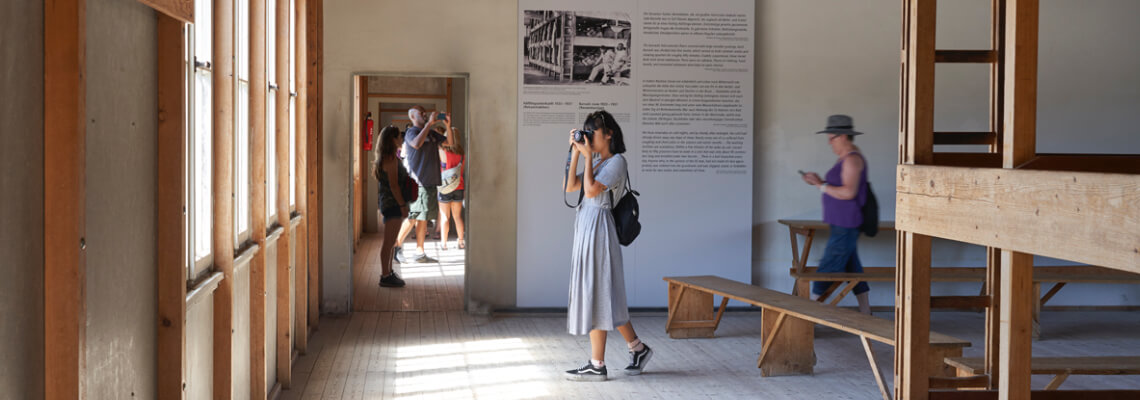Barracks Exhibtion
The so-called camp road formed the main axis of the camp; it still runs from the former roll call square in a northward direction towards the “Mortal Agony of Christ” chapel. A total of 34 barracks were located on the right and left of the camp road.
The position of these barracks is marked by the concrete contours laid out retrospectively, while the two barracks at the beginning of the camp road were reconstructed as part of the Memorial Site. Still recognizable today, the ground plan of the camp with its symmetrical arrangement and allocation of functions was implemented in almost all concentration camps.
The current appearance of the area fails to convey the sense of confinement and density of the original barracks complex. The concentration camp was initially planned to hold 6000 prisoners, but was continually overcrowded in later years. In particular from 1944 onwards the situation confronting the prisoners was an utter disaster: the interiors of the barracks were altered to jam in as many persons as possible. Living conditions worsened drastically, with disease and hunger rife. On April 29, 1945, the day the camp was liberated by American troops, over 30,000 completely enfeebled persons were imprisoned here.
The barrack on the right-hand side houses a small exhibition featuring a reconstruction of how the interior was arranged in 1933-34, 1937-38, and 1944-45. A new exhibition is currently being prepared for these rooms.

